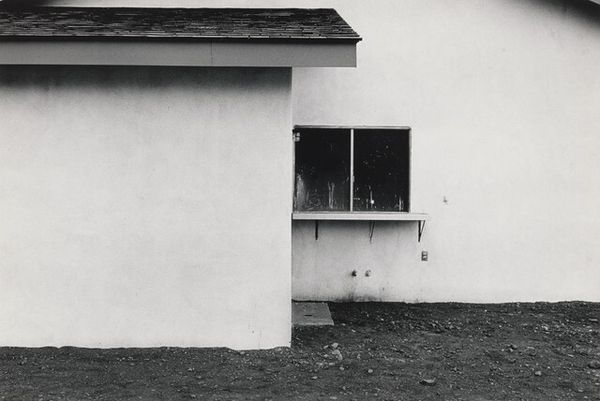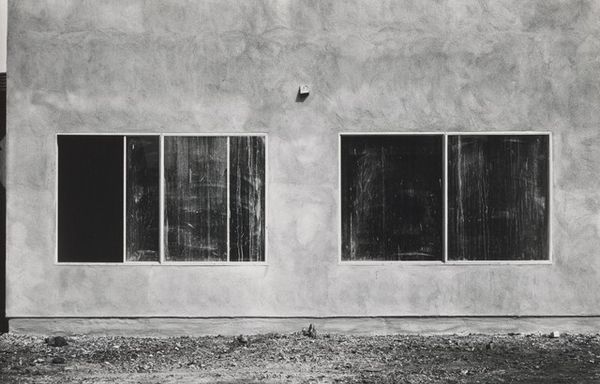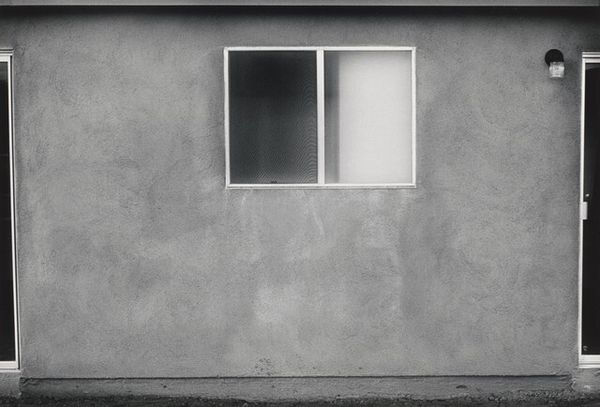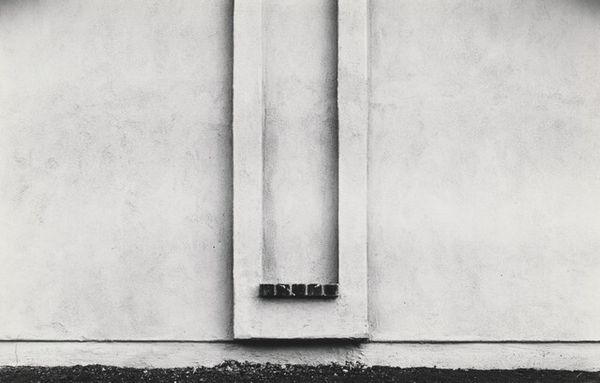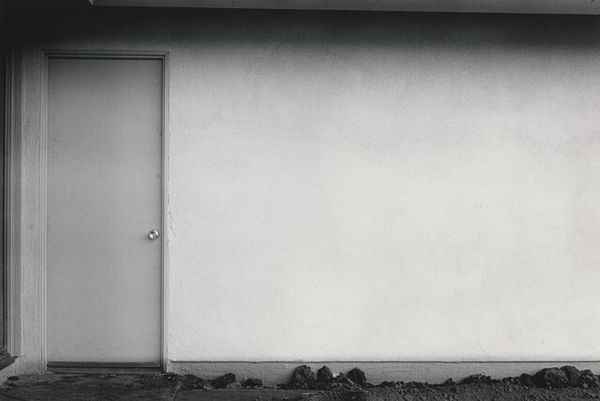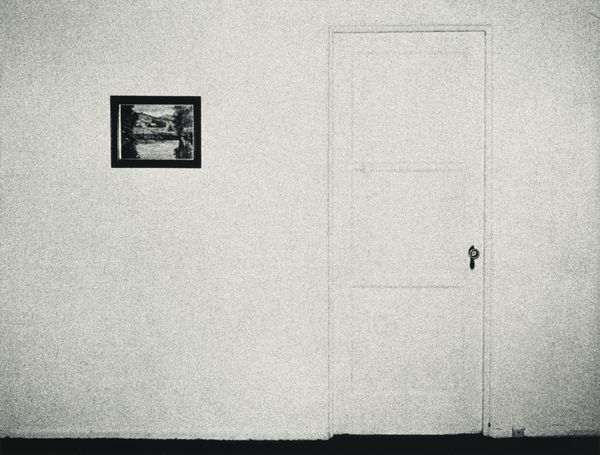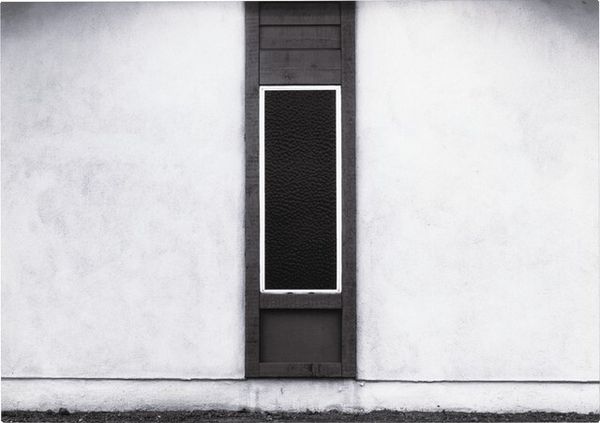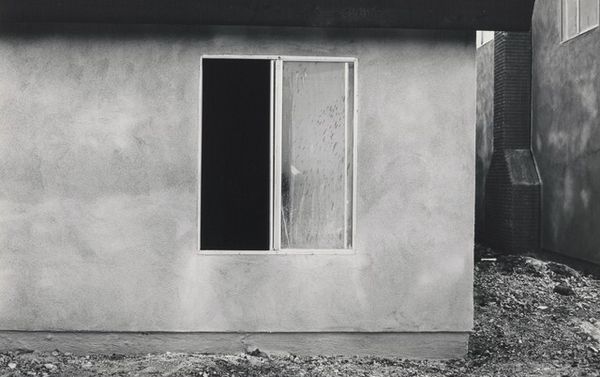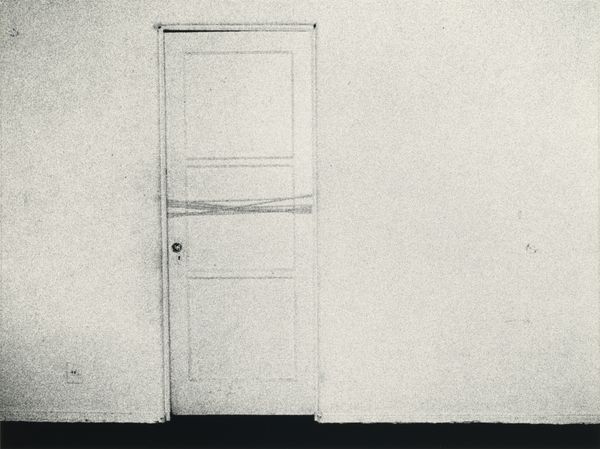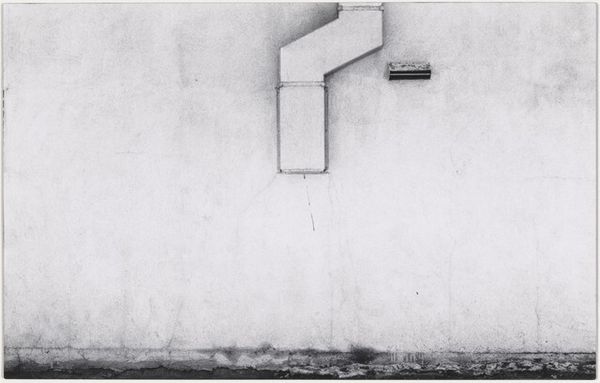
photography
#
conceptual-art
#
landscape
#
photography
#
monochrome photography
#
monochrome
#
realism
#
monochrome
Dimensions: image/sheet: 15 × 21 cm (5 7/8 × 8 1/4 in.) mount: 27.94 × 27.94 cm (11 × 11 in.)
Copyright: National Gallery of Art: CC0 1.0
Curator: Here we have Lewis Baltz's "Tract House #20," a gelatin silver print created in 1971. It's part of his exploration of suburban landscapes. Editor: It’s undeniably bleak. The stark contrast and geometric forms give a feeling of alienation. Look at the window, practically a void. Curator: That's interesting you pick up on the bleakness. Baltz was indeed interested in revealing the stark, almost banal reality of these mass-produced homes, their disconnection from community and nature. Think of the social impact of rapid suburban development. Editor: Exactly! And consider the formal elements reinforcing that theme: the flat planes, the repetitive shapes of the vents and boxes, all emphasizing a kind of visual monotony. Even the grainy texture amplifies the rawness of the setting. Curator: These images directly critique the romanticized vision of the American Dream. What is fascinating about his work, particularly this series, is how he uses this minimalist, almost documentary style to address anxieties about modern living and urban sprawl in post-war America. It is meant to trigger discussions. Editor: And it's undeniably effective. I think, the severe limitations of his palette force the viewer to focus on form and space, contributing to the work’s overall mood. It is about the subtle shift between photographic representation and a kind of abstract composition. Curator: Yes, he's very strategic about the gaze. Baltz intentionally avoids creating visually compelling scenes, challenging our notions of photographic beauty. It also questions the purpose and reception of fine art itself. Editor: Perhaps it asks us to see beauty not in grand landscapes but in these ordinary, overlooked spaces. Not to romanticize them, but acknowledge and investigate their aesthetic, despite the social undertones of your critique. Curator: A fitting point, really. Ultimately, Baltz’s photograph becomes a quiet, but powerful commentary. Editor: Leaving me with a new appreciation of its calculated plainness.
Comments
No comments
Be the first to comment and join the conversation on the ultimate creative platform.
